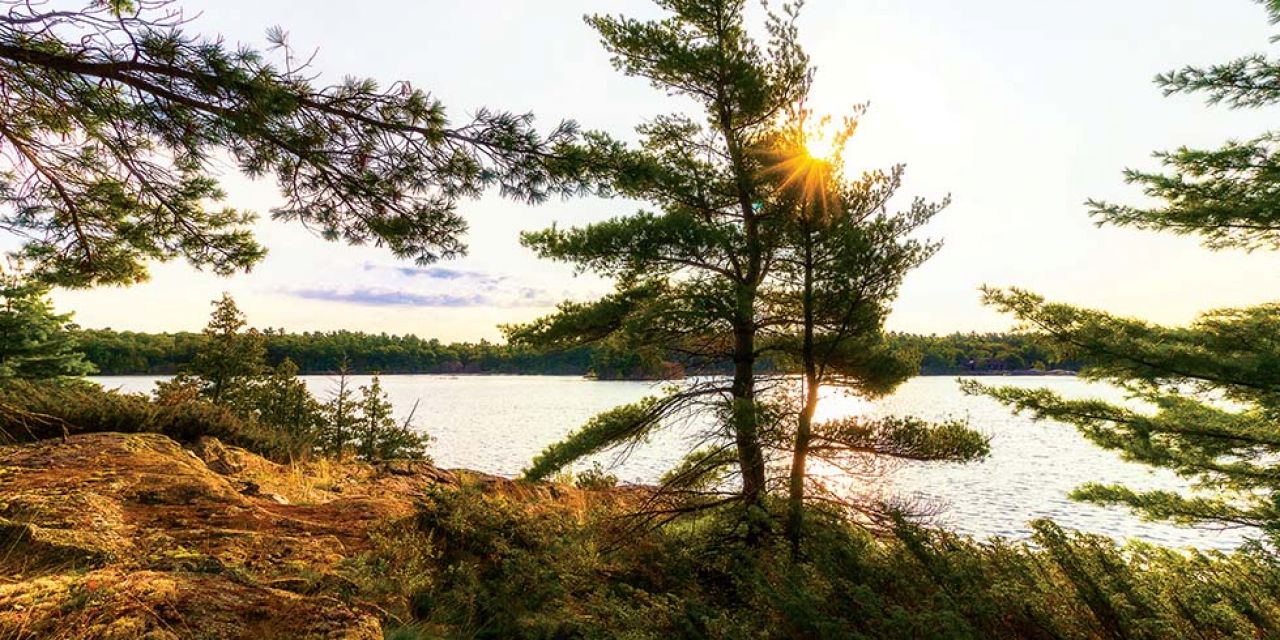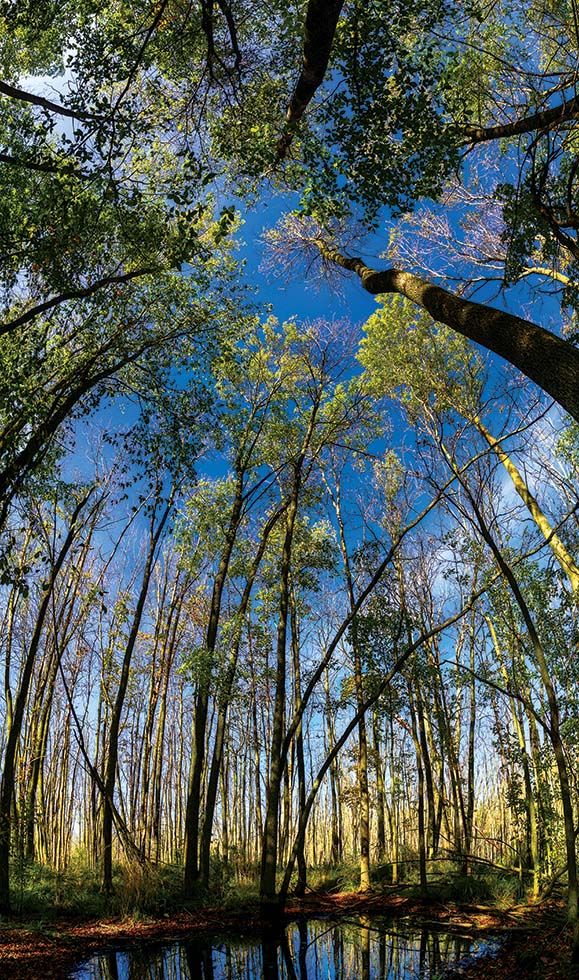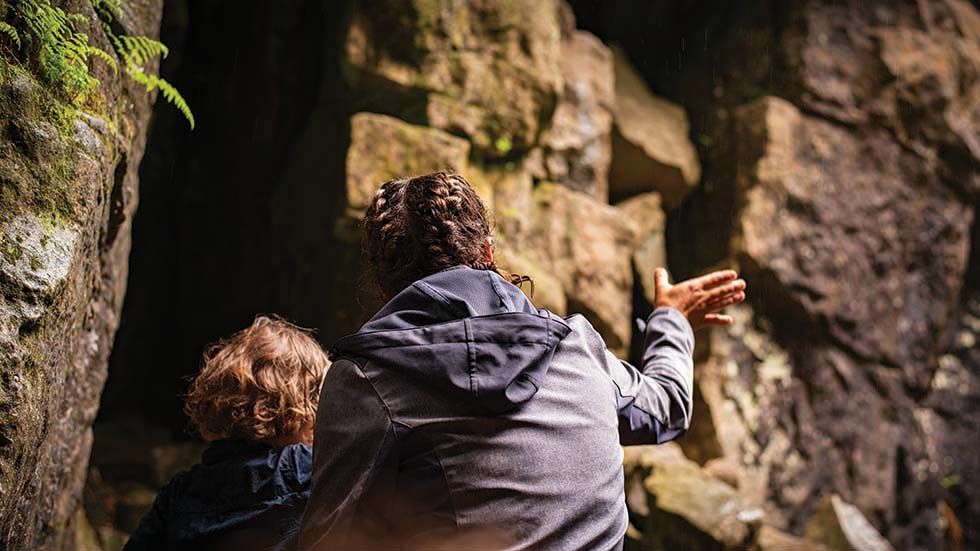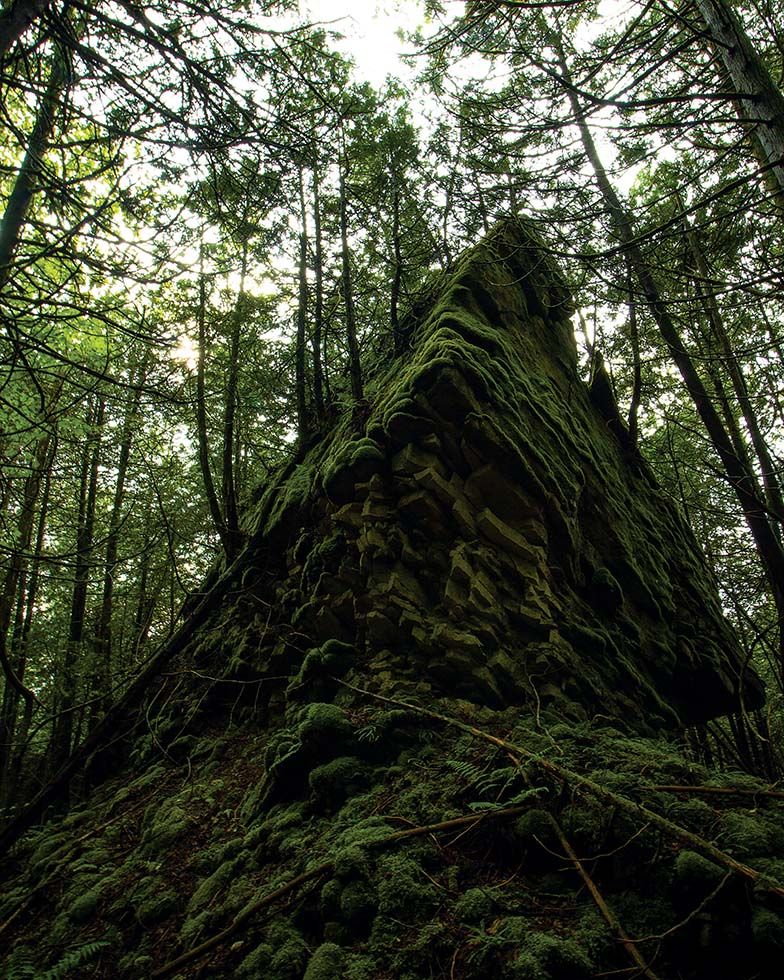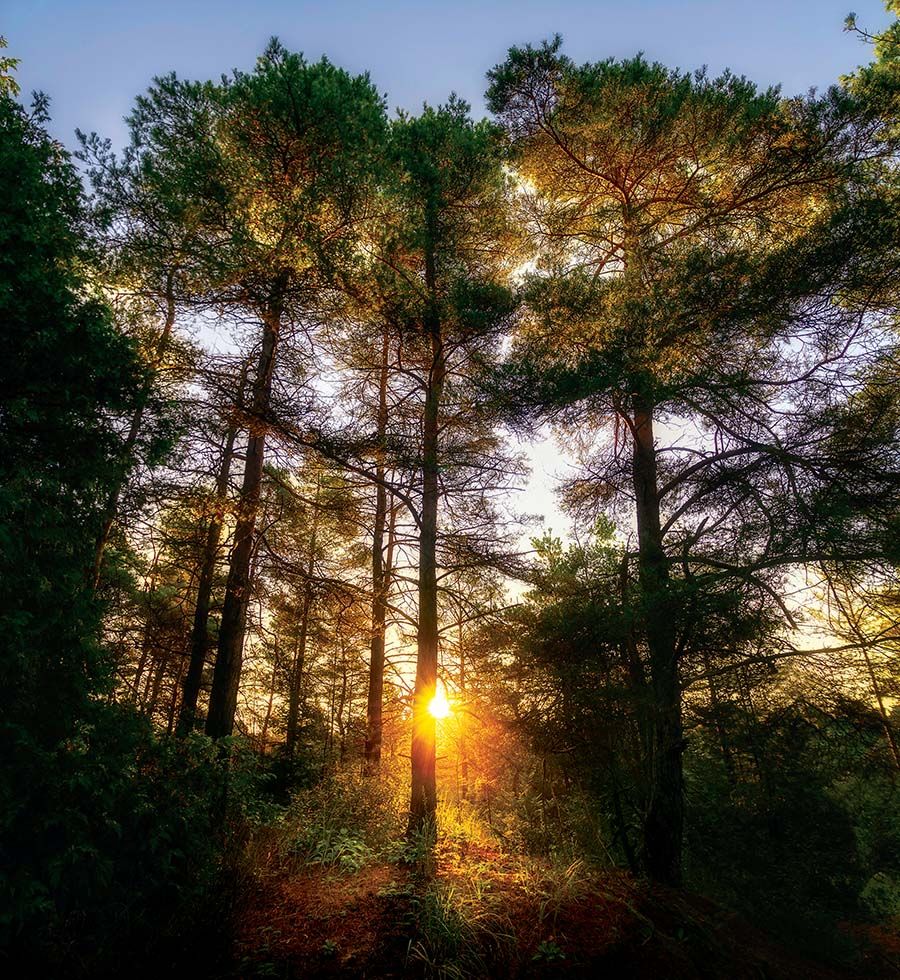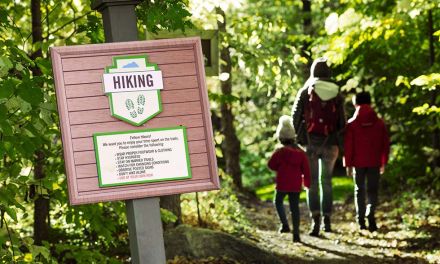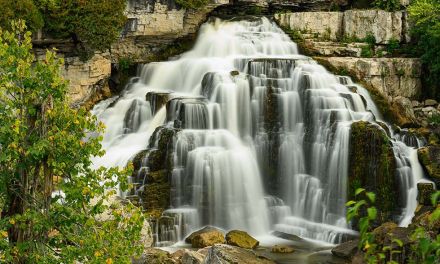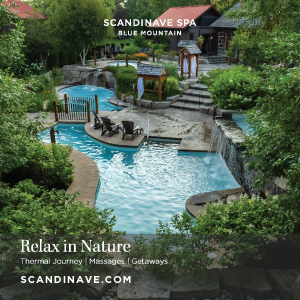Story & Photography by Zak Erb
How often do you find yourself in the woods? For most of us diligent nine to fivers the answer is likely once or twice a week at best, with the frequency dropping the closer our homes or jobs are to major urban centres. And, if you’re anything like me, those rare forays into the forest tend to go something like this; “I have 2.5 hours and I need to cover 10km of trail. Gotta hit 12,500 steps and get that heart rate up for a solid 45 minutes.”
For some, time in nature has become something of a reflection of their regular workday: results oriented, heavily micromanaged, and increasingly digitized.
We know that time spent in nature can be immensely beneficial. It reduces stress and anxiety while enhancing mental focus and physical fitness. We know that the wilderness is our single greatest defense against the relentless pace of modern life. We in Canada knew this when we designated millions of hectares of our country as protected parkland. We know this in the academic world through countless studies correlating forest walks with general health benefits.
What we don’t seem to know is how to let the woods effectively practice their medicine. We Canadians spend so much of our time indoors (22 hours and 33 minutes each day, according to the Journal of Exposure Analysis & Environmental Epidemiology), that it’s difficult to break out of our established patterns, slow down, and let the forest perform its healing.
‘Shinrin Yoku’ originated in Japan in response to this same problem. The English translation is forest bathing and in practice, it is simply the act of being in nature. Walking without hurry or even direction, experiencing the forest with all of your senses. Studies spearheaded by Dr. Qing Li on the effects of forest bathing indicate that it is effective in reducing the effects of fatigue, anxiety, and depression. Subjects experienced reduced blood pressure and lower heart rates after a two-hour program of forest bathing, when compared to similar activity in an urban setting.
This practice has now spread across the globe, thanks in part to organizations like the Association of Nature and Forest Therapy (ANFT). Founded in 2012, the association trains, certifies, and supports Forest Therapy Guides, who then lead groups on forest walks. The guide encourages mindfulness, forest stewardship and harmony between participants. Tamara Fournier was born to become a Forest Therapy Guide.
Based out of Clarksburg, Tamara can usually be found in the woods which surround nearby Metcalfe Rock. In her role as a climbing and caving guide with Free Spirit Tours, she has led countless groups into the woods, over the babbling stream, through ancient caves and crevices. In this time, she has developed a sincere and abiding love for the land. This understanding of wild places, combined with her abilities as a leader, and passion for community, drew her to begin training with the ANFT in early 2019. Now, as a certified Forest Therapy Guide, Tamara has been leading others into better understanding themselves, and the natural world around them.
“By becoming a guide, I knew I’d be able to support people in cultivating that connection with nature for themselves. And that can be such a powerful tool, to feel connected—not only to nature—but also to self, and through this to others.” Her walks encourage these connections by first restructuring our typical approach to outdoor time. Mobile phones are powered down, and as their insistent beeps and buzzings fade, the sounds of the forest seem to swell and come alive. Gone too is the pressure to cover great distances and hit targets. The trail itself, long viewed as the means to an end, becomes the destination. With a series of invitations, participants are taught to move with snail-like slowness through the trees, silently allowing the forest to reveal itself to them. And as the woods make themselves known, so too do the participants reveal themselves to each other as they share their thoughts and experiences, even the odd song or dance.
This community building may be the aspect of forest therapy which most excites Tamara. “Weaving in my passion for mindfulness, love for humans and community… the result will hopefully be a more caring, cautious and aware community, living sustainably and in balance with nature. That’s the utopia goal.” These guided walks culminate in a tea ceremony which features wild tea brewed by Tamara especially for the occasion. It is a touching moment where participants reflect on their time together and offer gratitude to the host forest.
On a recent forest walk with Tamara my biggest takeaway was how good it feels to simply move slowly through the woods. Laying a hand on a mossy stone, breathing in deep the scent of the woods. You begin to feel personally connected to a vast, ancient, living organism. It is humbling, and it is purifying.
Guided forest walks are an excellent entry point to forest bathing, and the guided experience is worth repeating, but a ny time in the woods, guided or not, is time well spent. Here’s a couple of my favourite trails in the Owen Sound area that help me achieve forest zen:
THE PALISADES SIDE TRAIL off 7th Ave East forms a 2.5km loop with the main Bruce Trail. Quiet, with rugged terrain this is a perfect quick outing with a small group.
THE GLEN MANAGEMENT AREA off Grey Road 17 just north of town features the Ron Savage Side Trail. The trail borders a marsh and forms a 5km loop with the main trail back to roadside parking. This is another quiet section with varied forests, wildlife, and of course the marsh. It is not a strenuous trail and is very well suited to the reduced pace of forest bathing.
As a species we are ever in need of the great outdoors. We don’t need studies to tell us this, our bodies and minds know it intrinsically. But the therapeutic benefits offered by our wild places are perhaps more vital now than ever before. Whether you’re an active trail runner or the sedentary type, the forest always has a lesson to teach, and good medicine to offer. Sometimes all we need is an invitation, and a little guidance. Forest Therapy Walks with Tamara have been modified to allow for physical distancing, and can be booked through Free Spirit Tours. E

